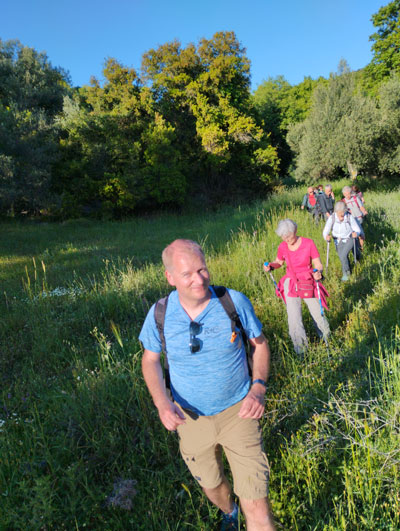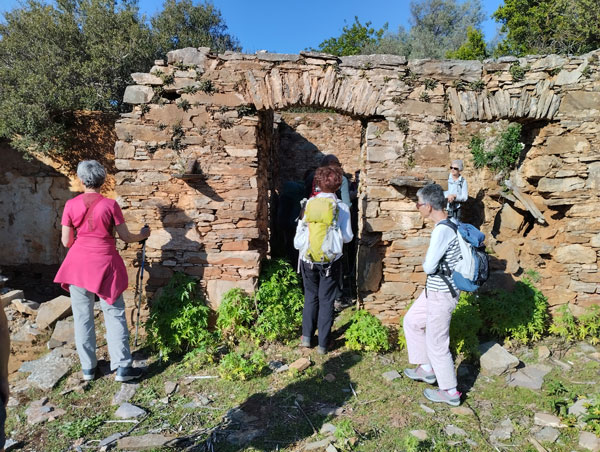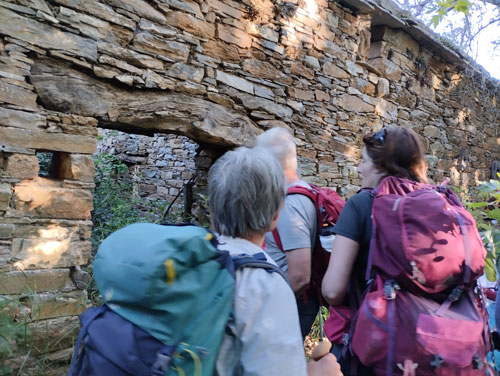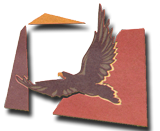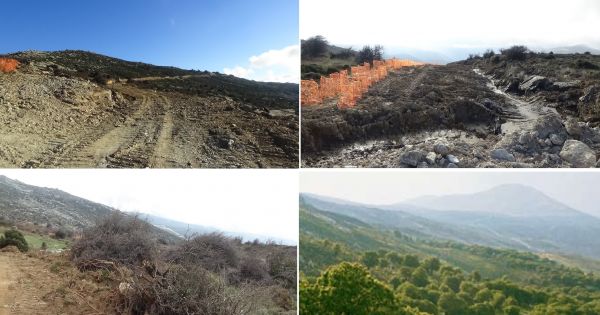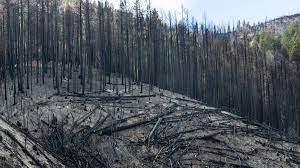Galana - An abandoned settlement
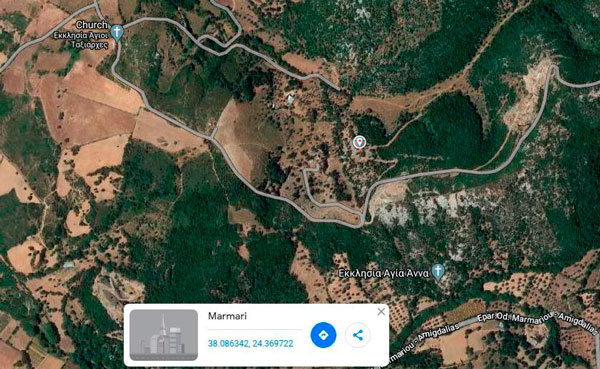
Galana is an abandoned settlement in Karystia area, between the settlements of Chania and Paradisi. It is located on the hill of the southeast side of a small amphitheater-shaped valley. (Coordinatesς: 38.086207, 24.369787)
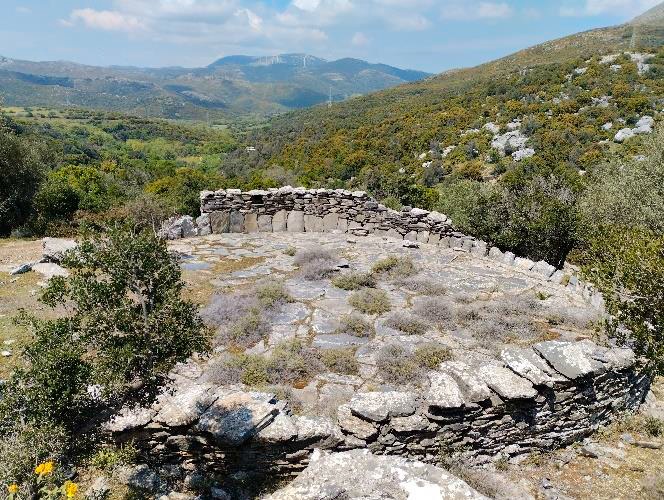
Galana has been abandoned and derelict since the middle of the 20th century. The last house was built in 1946. The remaining houses, preserved as ruins, were built towards the end of the 19th century.
According to the testimonies of the oldest Marmari inhabitants, Galana had 100 inhabitants in the first half of the 20th century. At the moment we do not know the date of creation of the settlement, however the area, due to its relief, has always been and, to a certain extent, still remains, the center of agricultural and livestock activities.
Unique architecture
The entire area of Karystia has unique architectural elements based on the use of stone, wood and unbaked clay. In Galana, however, there are additional unique peculiarities that are not found in other settlements in the area, and which were perhaps determined by the specific relief and also the tight, unusually for the area, limited territorially, core of the settlement.
Orientation
The orientation of the houses is South, while the large Northwest openings overlooking the valley were closed along the way due to the strong winds.
Layout
The houses, as in all rural Karystia area, consist of two main rooms which are surrounded by other structures, such as a room that encloses the wood-burning oven, pigsty, hen house, warehouses, etc.
One of the two or both rooms had a basement under their wooden floor, while one of the rooms also had a wooden interior loft. As is customary in the area, the constructions that are made on the downhill form large balconies in front of the two rooms of the main house.


Doors and windows
The openings are created with wooden bars or with arched wedged stones. The frames were wooden and only traces of them are preserved. We don't know if there were any windows.
Ceilings
The ceilings, as in the whole of rural Karystia, consist of a cypress trunk in the middle of each room placed parallel to the facade of the building. Chestnut or Mediterranean cedar beams are placed on it and vertically on either side. Split chestnut wood or reeds are placed on the beams and parallel to the trunk. Straw is carefully spread over them and finally, finely sieved clay is pressed with a stone cylinder. All buildings are surrounded by a stone cornice of local slate, which projects up to 20 cm, slopes slightly outwards, and is usually set to a depth equal to the wall.

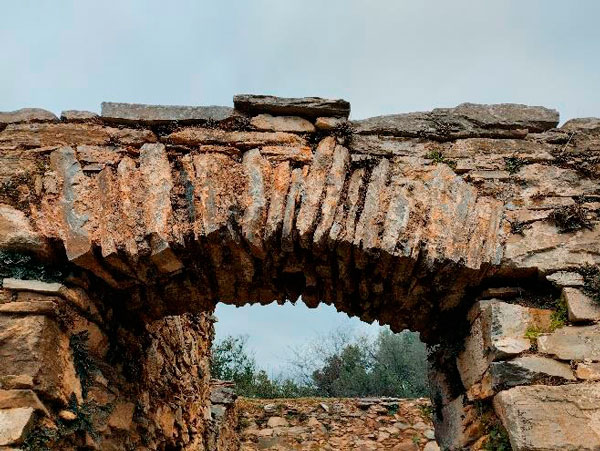
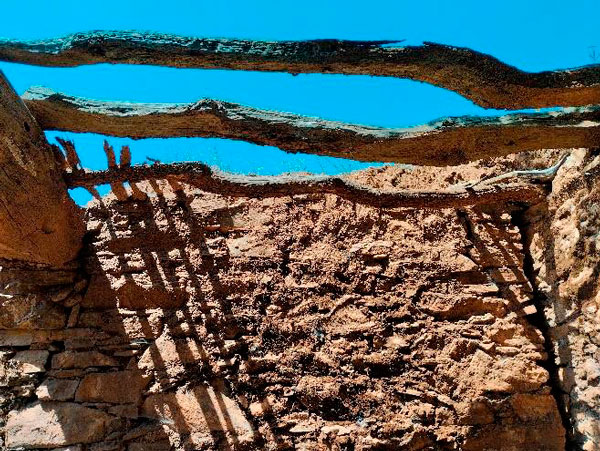
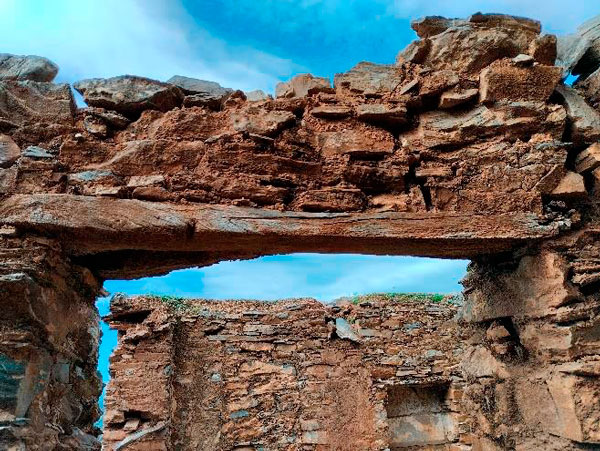
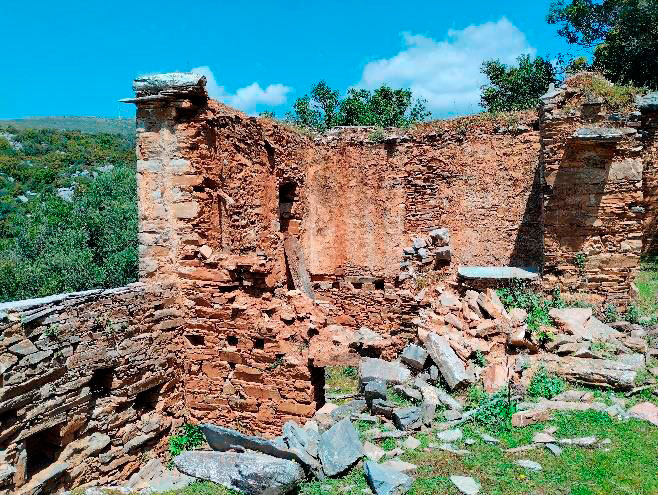
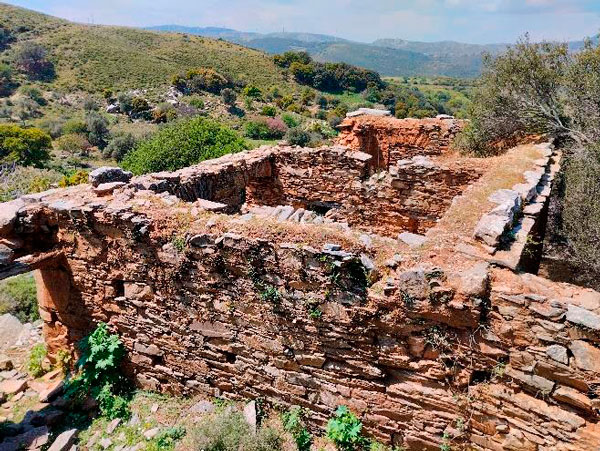
Other architectural elements
The houses have large fireplaces built in the southeast corners on curved logs. In the walls are alcoves of all sizes, while outdoors there are slate shelves near or on either side of the entrances. In one of the houses there are recesses that indicate the existence of an external pergola.
Threshing floor
At a higher point just above the settlement there is a large threshing floor.
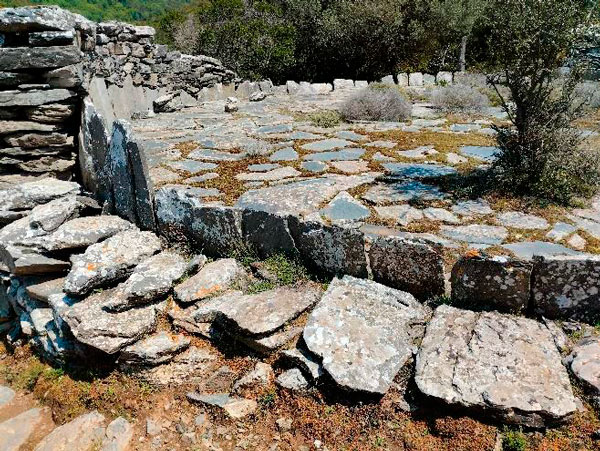

Stone-built path
Many parts of the path that connects the settlement of Paradisi with Galana are stone-built or carved into the rock.
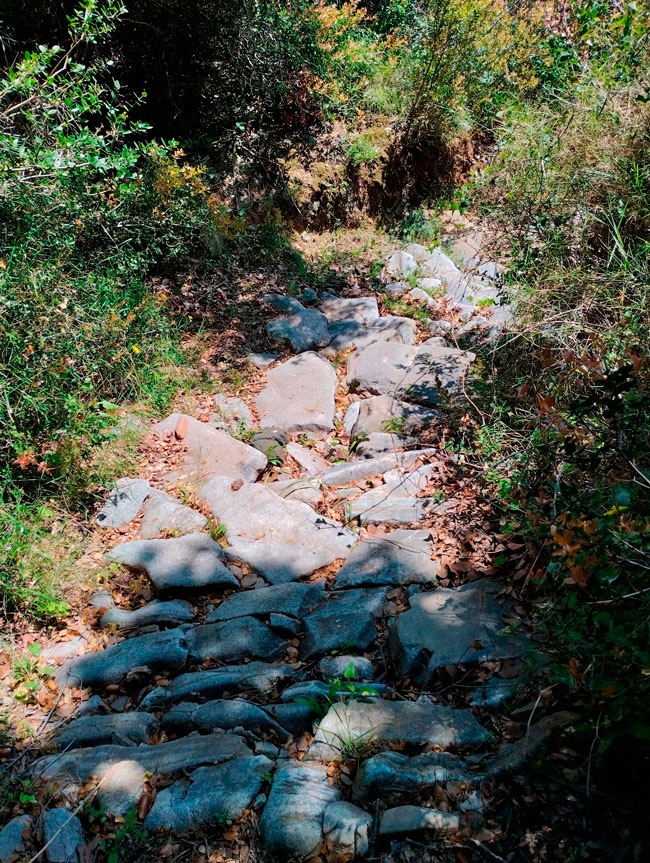
Olive-oil press and mill
Nearby is an abandoned olive-oil press and mill in which all the equipment, presses, mills, etc. are kept.
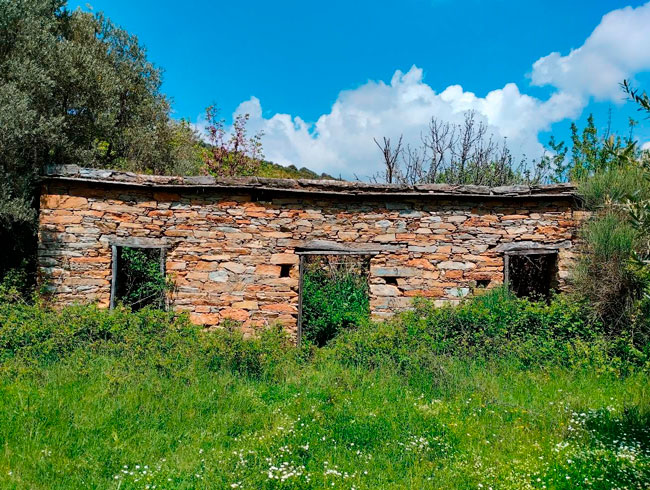

A unique heritage
The settlement of Galana and the entire area around it, despite the proximity to quarries and wind turbines, maintains a unique richness and character. It is a heritage that, beyond its natural beauty, provides unique evidence for the cultural wealth of the region, the everyday life of the people and their productive activities.
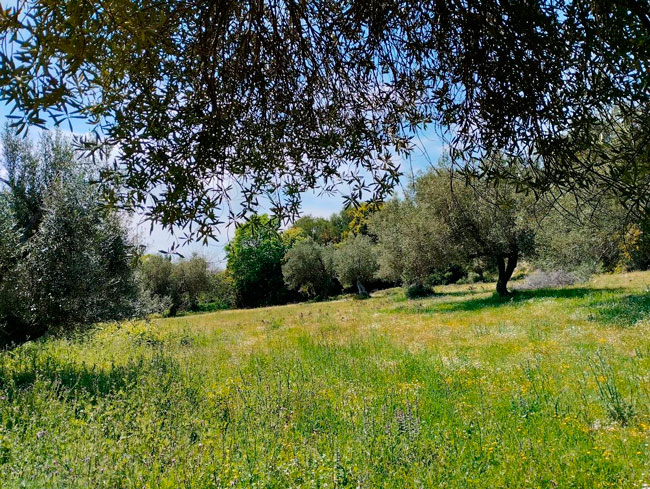

Immediate risk of total destruction
The site of Galana has been included in the planning for the installation of wind turbines. The relevant environmental study has already been approved and work can begin at any time.
This important heritage that we have to hand over to the next generations, but also to develop in order to be a pole of attraction and healthy development for the region is in danger of being destroyed by the opening of eight-meter roads and the installation of wind energy pylons at a distance of even 200 meters from the settlement (the height of such a pillar with wings reaches 120 meters).
The added value of the natural and cultural heritage as asset for the development of the region
The unique natural beauty of the area, with its many waters and sycamore streams, the slopes covered with ferns and herbs, and in combination with a unique cultural wealth, which is primarily expressed through the special architectural tradition of the area and the ancient stone-paved paths, constitutes a asset that belongs not only to all the inhabitants of the region but also to the whole of humanity.
This asset was handed down to us from previous generations and is a testimony to their way of life, habits, technical capabilities, but also the beauty of their life. The structure of a single residence testifies to the daily life of its inhabitants and their closeness to nature, animals, and crops. Wood-burning ovens, large fireplaces, shelters and lofts, unique roofs, evoke great interest to every visitor.
The network of paths that cross Karystia from one end to the other, many of which are paved in some places, reveal the mobility due to agricultural, livestock and quarrying activities since ancient times.
The threshing floors, the springs and the cisterns, are elegant artifacts of an era when the materials still formed together with the craftsmen, the aesthetic values.
Even if we are unable to recognize these values handed down to us by time and our ancestors, let us try to show the required modesty by reserving this wealth for future generations and handing it over to them.
Cultural and natural heritage together form the asset that will allow future generations to live in their place with dignity and self-sufficiency through a development that favors all members of the community.
